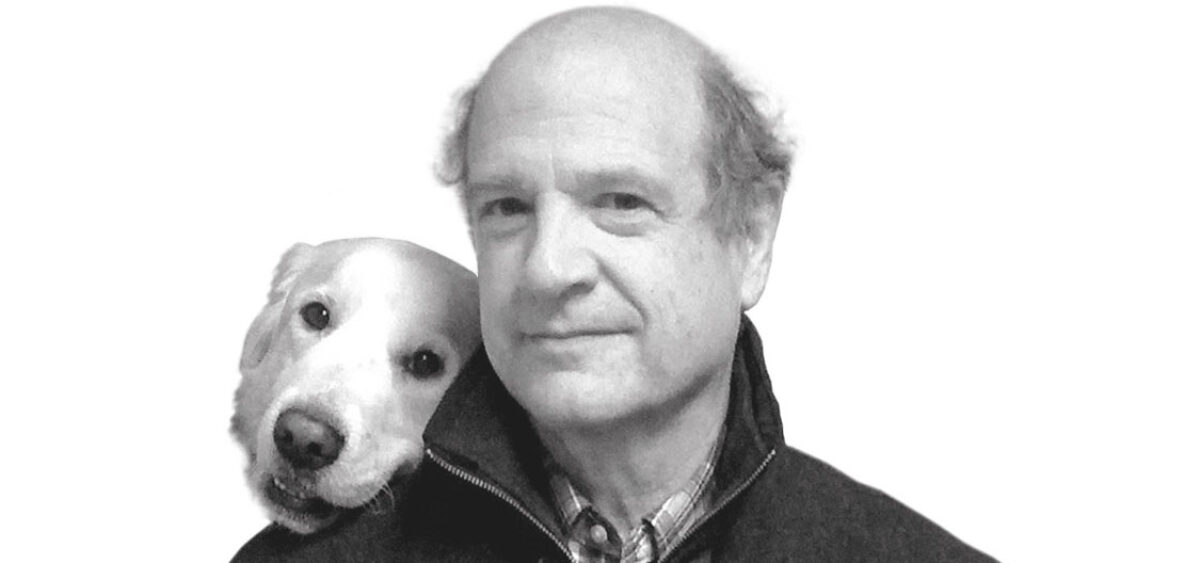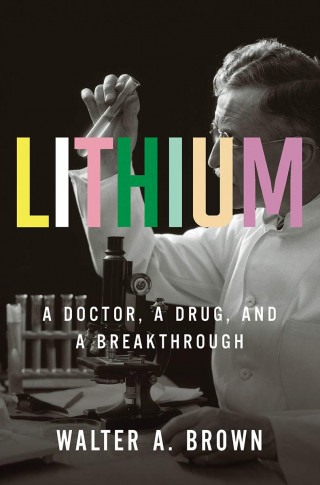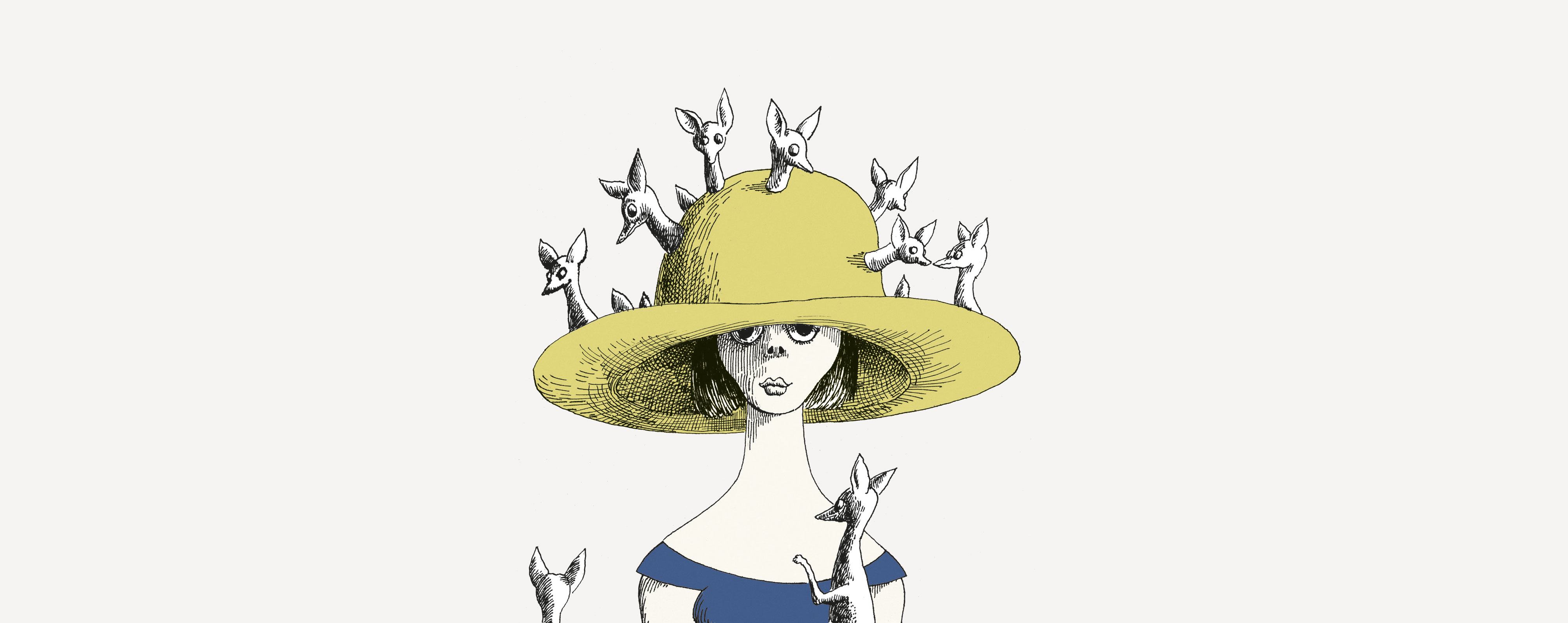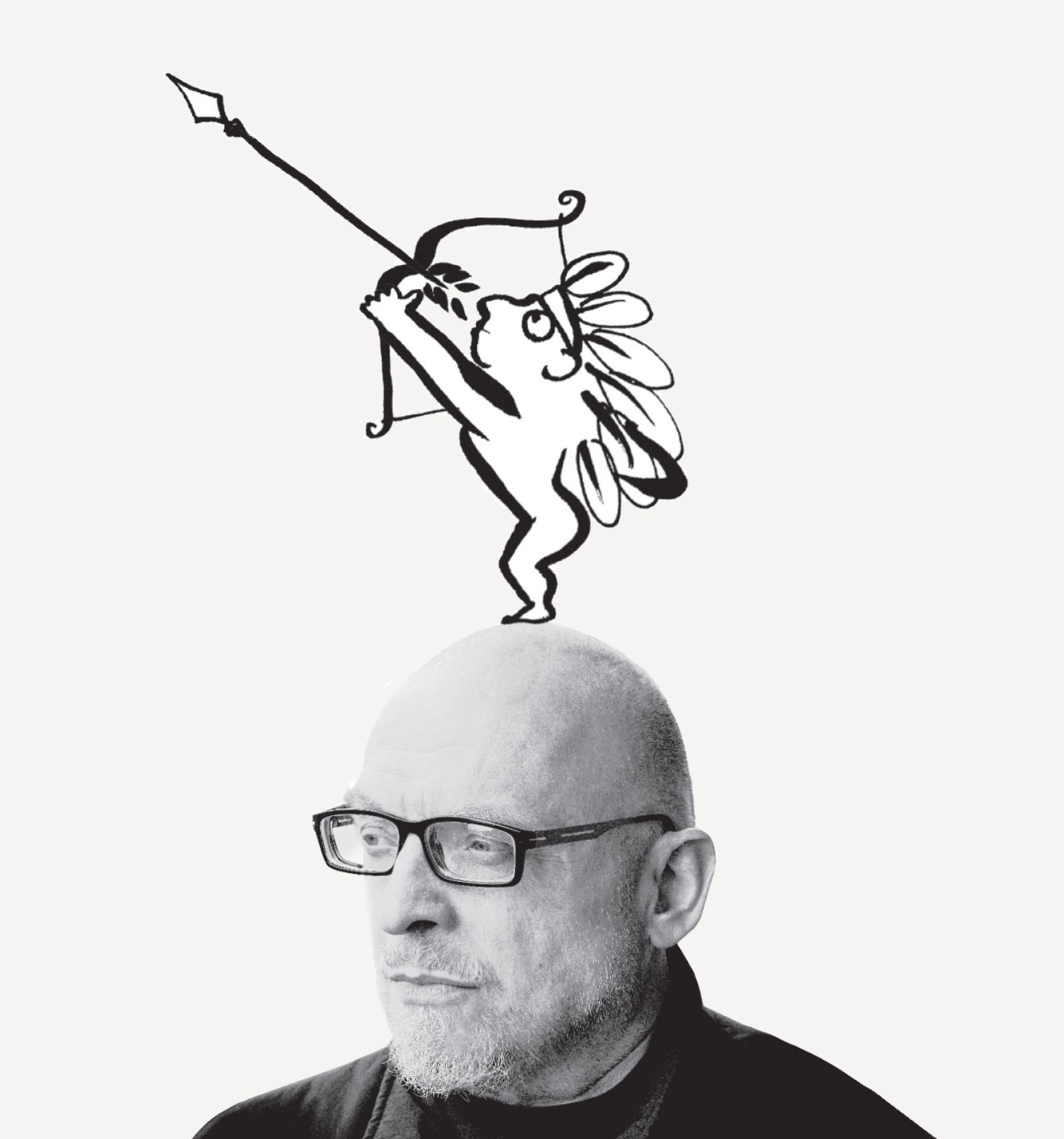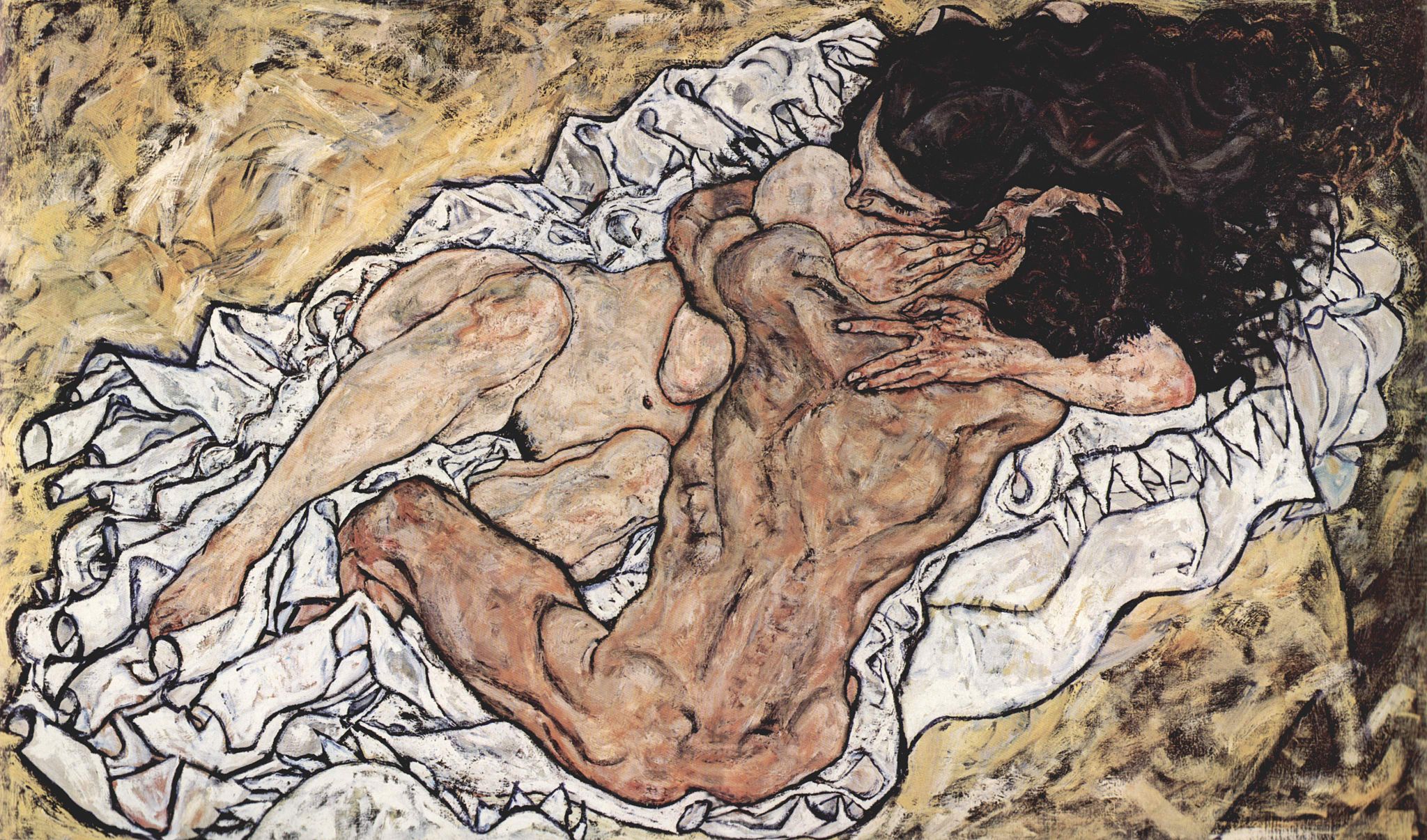
Madness can be an adaptation tool and even an unrecognized human quality participating in the success of our species. People differ mentally as much as they differ physically. There can be great power in this, says psychiatrist Michael A. Schwartz.
Marcin Moskalewicz: Does mental illness exist?
Michael A. Schwartz: Well… yes and no. I am a psychiatrist and I believe that madness really exists, but it is not simply an illness or group of illnesses. I would rather compare it to tallness. At a certain point, you become so tall that you can’t work onboard an airplane as a flight attendant because you’d have to slouch or hit your head, and that’s when suffering appears. This suffering can be accompanied by medical complications, but not necessarily. Others often suffer as well. And we don’t have a simple blood test that would define the limits of so-called mental illnesses. They are not the mental equivalent of somatic diseases. This is one of the features that makes psychiatry so different.
Tallness is one-dimensional, while people are multidimensional.
The main point here is that we are incredibly diverse. We think and act differently. It’s difficult to draw a line between proper and improper thinking or behavior. Especially since seemingly “abnormal” behavior can turn out to be effective if we change its context. Madness can be an adaptation tool, and the ability to adapt is one factor behind our success as a species. People differ mentally as much as they differ physically. There is great power in that.
And what about suffering?
Yes, suffering can be intense. But the topic is complex and deserves much thought and conversation. Humans are an incredibly diverse species. Our limitations are simultaneously our assets… Circumstances can change, affording significant advantages at times for some of us and significant disadvantages for others. But all along, we remain one species.
What do the advantages look like in practice?
To get at this topic, let’s put aside the notion of illness for a moment and take a look at human diversity in terms of specific characteristics. We can easily classify ourselves and others in terms of our height on the one hand, and weight on the other. And we can analogically classify ourselves and others in terms of our ability to play roles on the one hand, and our identification with these roles on the other.
The first dimension decides whether you are a good player—how well do you get along with people, how do you make friends, how do you appeal to them? Do you feel you are a good citizen, father or friend? Are you flexible in playing social roles? Is playing difficult for you? I think we can define ourselves in that respect intuitively within a minute, as much as we easily notice that someone is of above-average height. The second dimension defines the degree to which you believe in these games. Do you think it’s important to be a good father and citizen? Or maybe it’s just the game you’re interested in, or pretending in front of others? Extremes within the scope of a population are associated with suffering as much as with an adaptive advantage.
So let’s take an outstanding player who does not identify with his role. We’ll call him a psychopath. This is a person who easily takes advantage of others, appeals to their good will, and subsequently betrays them. But there are also those who completely believe in the game they do not know how to play. They have an unusually high level of anxiety. They can also be obsessive. They try with all their might, but it never works out. They aren’t sure if they closed the door and they have to go back to check. They constantly worry. There are also those who don’t know how to play our social game, and they don’t believe in it either. They exist in their own little worlds. We could describe them as schizophrenic. They do their own thing, and sometimes they can come up with their very own new game. Finally, we have those people who both play the game exceptionally and strongly believe in the game they’re playing. Those are the type of people you’d like to have on your team. They will work hard until late. But they won’t change their job, even if they are taken advantage of. Or they will persist in a hopeless marriage and suffer from depression. Life will betray them. These are melancholy types.
Does modern society celebrate diversity?
Yes, diversity of gender, race, and ethnicity—but by no means diversity of human temperament and conduct. Paradoxically, at present, when it comes to human conduct, we are far more likely to celebrate behavioral conformity. In fact, we scorn and even condemn behavioral diversity. Why? There are perhaps many causal factors. One that is fundamental is our increasing estrangement from each other. Perhaps a core feature of our present-day increasingly mobile, global, and computer-based culture is an ever-increasing erosion of intimacy-facilitating communities and small groups. Mass society eradicates and replaces communities, and then who are “you” to “me”? And although we may “friend” each other on Facebook, or in a video game, such forms of relatedness cannot facilitate the sort of deep knowledge of each other achieved in the past through living closely together for years and years in small communities, neighborhoods, and family groups. And since we no longer really “know” each other, how can we trust each other? Perhaps through a rapid assessment of your apparent conformity to behavioral social norms and values. In such a manner, we can accept each other, so long as you “behave.” And if you do not? Well, goodness—that’s not acceptable. After all, you could shoot or stab me or blow us all up!
Is there an example of behavioral norms that we must all aspire to conform to?
These norms are relative to the culture in which they operate and depend upon its current phase of development, customs, and values. Societies rise and fall. If everything is going in the right direction, societies need people who both believe in its values and embody them expertly. Such people are “builders”—they work hard, “do it right” and believe in what they are doing with passion and devotion. They expertly know how to “play the game.” But at some point it will be time for the fall—the wonderful hydroelectric dams of the past will be outmoded, inefficient, and environmentally problematic; that amazing cable and pole-based phone system—though protected by the state—will be obsolete. Time to take it down. Will there be suffering from the destruction and radical change that will come? Of course, says the game-changer, but that’s not my problem—time to toss out the old game and profit from a new one. But what about all those widows and their children now living on the dividends of the stocks that you will bankrupt. Well that’s not my problem! And furthermore, following the collapse, protective people will be there—people who value the good in the past, preservers who still believe in the old game, although they were never good at playing it. They will do their best to preserve—to save the good that currently is at risk of being lost with the rest. And finally, when the formerly dominant old game comes to its end, creative people are needed, those who will come up with an idiosyncratic, previously never anticipated new game; visionaries of the schizophrenic type. Yes, they live with ideas and notions that seemingly make “no sense.” But something that seems irrational at this time may be considered “the new paradigm” in a hundred years.
Franz Josef Kallmann, a pioneer of studies on the heredity of schizophrenia, fantasized about completely eliminating it from the human genome. Do you think such an effect would be desirable?
Absolutely not. Schizophrenia exists on a spectrum analogous to height or weight, and can be associated with incredible creativity. The social function of schizophrenia is radical innovation. And many outstanding people derive their greatness from quasi-psychotic experiences.
Imagine, for example, that we are living on a prehistoric island. Water, palm trees, sun—paradise. And that we all reside in the trees, on hammocks. We are happy. Meanwhile, one of us—the “madman” of the group—is preoccupied with digging deeper and deeper holes into the ground. Why? Well, frankly, it does not make any sense. After all, he is a madman. And finally, he digs himself a cave under the rocks and even moves in there. Always walking around in his underground haven, he habitually yells out mutterings that are not comprehensible. The children make fun of him, sometimes even standing around the hole opening into his “abode” to urinate upon him from high up. And one day, a terrible storm arrives and knocks down nearly all the trees. Were we monkeys or great apes, this might have been the end of us. But we are humans, and we can more readily adapt. So we venture into the cave of the madman, take a look, check it out and see that this can indeed work as an actual abode. And we start to dig cavernous dwellings for ourselves. The madman turned out to be a prophet. He showed us a new way of living that seemed pointless earlier.
I expect the madman will become king of the village.
Most likely not at all. More often, the community might accuse him of having brought down the wrath of the gods, who then punished everybody by sending the storm. And he will be crucified on the last standing tree. That, unfortunately, is how visionaries often end up. Recognition comes in later generations.
Why does the game no longer apply?
At a certain point—nowadays we call this “postmodernism”—before the visionaries’ gifts and directions arrive, destroyers enter the picture, and these players, with antisocial tendencies, have an opportunistic go at what lies before them. Time to get rid of hydroelectric plants and profit from other forms of energy. Time to replace land-line phones with mobile phones. And social costs? Well, they are of no significance here. The destroyers pick up new games and move forward with them. And score wins—certainly from their perspectives. If we take a global look at current moments in the development of our civilization, we can see such people among politicians. Scoundrels? But good at playing games and achieving a lot, because they have fewer objections when it comes to destroying. I will not name names here, we all know some of them. They are the ones who are defining our postmodern world.
So these types probably appear in other professions as well?
Of course they do. Game changing can be exciting, lucrative, a source of fame and fortune. And risky? Well that’s part of the game. As is collateral damage. Risks as well as rewards. We see this everywhere. In all sorts of professions, mine—psychiatry—too.
Why did you become a psychiatrist?
Good fortune and good timing! Helping others, and it’s certainly a path to finding out who we are. I became a doctor at quite a young age. Because I had skipped several grades in school, I was among the youngest of the graduates in my year. And after I had graduated, when people started addressing me as “Dr. Schwartz,” it didn’t feel quite real. I was a new intern, not doing much more than following and assisting others, interviewing new patients, starting and restarting intravenous lines, drawing blood for tests. One day, a distinguished professor was admitted into the hospital on my service with some sort of lump on his neck. Over the weekend, one evening, when I was the only physician working on the ward, I went into his room while rounding routinely. His was an enormous private room, with a huge window, and the moonlight shined through it making it almost as light as day. I walked in and saw that he was lying in blood. Just a moment earlier, he had apparently cut the arteries on his arms, legs, and neck. I understood immediately that the lump was likely a malignant tumor and that the gentleman had decided to commit suicide. And that the last thing he expected that evening was a visit from an intern. I still recall his looking at me, his expression, and his telling me: “Leave, just leave, nobody will know you were here.”
What do you do in a situation like that?
I called for help and they rescued him. And very soon afterwards, I rotated off the service. I have spoken with colleagues about this event a number of times afterwards: “You should have left, closed the door”; “You should have talked more with him”; “You did the right thing.” The problem was that nobody had ever discussed such a scenario with me before! I came upon a bleeding man, called for help and I think I made the right decision. You can look at it differently, but that’s when I became Dr. Schwartz. I understood that practicing medicine is very, very real.
So you wouldn’t allow for the right to euthanasia upon request?
It’s not difficult to take your life if that’s what you want. My view is that if we institutionalize suicide, doctors should not be involved in it. Doctors should defend life. If we as a society want to legalize euthanasia, someone else should control the process.
Who are you in addition to being a psychiatrist?
I’m an American, born towards the end of the Second World War, in the middle of the Holocaust, just before the baby boomer generation. We were called the lucky few. In the face of omnipresent death, we were a miracle of life. In terms of my ethnic background, I am Jewish; both of my parents were Jewish. The small communities in which they had lived are now a thing of the past. I am not deeply religious, though I sometimes go to the synagogue with my son. I don’t eat pork either, though I don’t think that eating it is a sin.
My mom’s parents came from Poland, my dad was born in Motol, a town in what is today Belarus, not far from Pińsk. In New York, a Polish woman named Anna Staszewska lived with us—she was our nanny and she and mom both brought me up. Anna was a very loving person and a wonderful cook. As a child, I ate a lot of Polish dishes that she would slightly modify to suit the Jewish palate. Anna was Catholic and she had a lot of pictures and statues of saints in her room at home. We spoke English with each other. She would only speak Polish if she was furious at me (and she never translated what she said). When my sister and I grew up and moved away from our parents, Anna stayed with them—she was always my “second mom.”
Have you experienced anti-Semitism?
Never as a child. I grew up in New York—very ethnic and lots of in-groups, but we all at worst co-existed with each other. It was a shock when I went to Princeton. One of the guys in my dorm was apparently distressed that he was sharing his space with a Jewish boy who had gone to public school. Such a shock that it basically went over my head.
Beyond that, I have not really experienced anti-Semitism. I love being an American. I wanted to go to California, Alaska or Hawaii. This was my promised land! The 1960s were wonderful, we were making new rules. And today? Seems like a regression. In 1969, I missed Woodstock only because I was an intern on call. I remember it like it was today: I’m listening to a broadcast on the radio and they’re all yelling: “We’re all here! We’re all having fun! We’re all together!” While I have to sit or walk around in the hospital all night long.
Did you take any drugs?
I hung around them, at the request of the Federal Government! There was a draft because of the war in Vietnam towards the end of the 1960s. Everybody had to enter the Armed Services, but according to a rule called the Berry Plan, a doctor working towards a specialization could defer military service. And in consequence, based on a lottery and luck, I wound up serving a two-year military alternative service program working in the clinical psychopharmacology laboratory of the National Institute of Mental Health in Washington, D.C.. And there, we conducted research on psychedelics, especially dimethyltryptamine (DMT), which is contained in certain plants and is an ingredient in ayahuasca. It causes hallucinations. We conducted experiments on cats, to whom we would give DMT and LSD—both related hallucinogenic substances—and in 1973 published the results of our research. Our goal at the time was to investigate the so-called adrenochrome theory of schizophrenia.
What’s the theory?
It turns out that we humans have hallucinogenic substances in our own brains—for example, DMT is a normal product of its metabolism. Take DMT as a drug and it causes hallucinations. So what is it doing in our minds? And what if—metabolically—I produce twice as much of it than you do. Will that make me more imaginative than you? And what if I make ten times as much as you? Will that make me psychotic? This is the essence of the adrenochrome theory of psychosis. But the first problem with the theory is tolerance. What if all humans simply develop tolerance to DMT—as we do to LSD. That would mean that increasing amounts of DMT in our brains would have no effect. And we found that cats, as is the case with humans, do develop tolerance to LSD. But—of enormous interest—they do not develop tolerance to DMT. On both substances, the cats would initially apparently chase invisible mice. Repeat or increase the dosage of LSD and the chasing stops—tolerance to the substance occurs. But repeat or increase the dosage of DMT and the chasing went on and became more intense—apparently tolerance did not occur.
Did you achieve anything?
We had completed the first step of the adrenochrome hypothesis for schizophrenia. Unfortunately, during Richard Nixon’s presidency, during a wave on the war on drugs, our program was derailed. Sadly, many questions were left without answers, and scientific research was delayed for decades.
Incidentally, the head of my laboratory was a well-known scientist. One day somber Federal Agents in suits and badges appeared at his office, claiming to represent an important government official who could not be named but who was dealing with overwhelming job stress. They had many questions about anti-depressants, came several times, and were interested in homemade methods that might achieve antidepressant-like effects without “leaving a trace.” Then Watergate unfolded—and they stopped showing up.
Conceivable benefits from a careful and cautious role for psychedelics in psychiatry could be enormous. And a present-day update on the adrenochrome theory could still be key to understanding psychosis, which might help to create a new generation of drugs. Psychedelic states may have therapeutic value, something that recent studies may presently be revealing.
Can a person fully recover from mental disorders?
Of course! Apart from recovery, a problem that characteristically remains is the stigma. My cousin Irwin suffered from Tourette’s syndrome. Social situations were very challenging for him, as was conventionally-appropriate behavior. I was about a dozen years younger than him, and as a child I thought that his misbehavior was clever and even extraordinary. And although he significantly improved later on, he could never shake off the shame and stigma resulting from his former ways. He was never fully accepted by others. This is so often the case for psychiatric patients. If you live through a heart attack and get past it, you have something to shine about. But what if you have had a nervous breakdown or have suffered from schizophrenia? Often, you quickly learn that if you start talking about it, many people will turn away from you. So you often don’t say anything. That helps to nurture the untrue myth that mental conditions are incurable. Those who recover are often quiet, so we typically see the most problematic situations and not the cures. For this reason, after his passing, in the 1990s I started a foundation called The Irwin Foundation, in honor of my cousin. The foundation organized events to celebrate recovery from psychiatric conditions, where participants socialized, ate, danced, and sang. At an event, you do not know who the patient is, who the former patient is, or who the doctor is. The idea is to overcome stigma. And the far-reaching goal was the creation of a “peer support program,” through which people who have recovered can help those who are suffering. You can currently get training and employment in this area. And the time while you were ill is not lost, because you gain “lived experience,” which you can use in your work later on.
How did you get the word out to people?
Sometimes you get lucky. George W. Bush was president at the time, and we quite serendipitously organized one of our events in Dallas, Texas. Food was to be served, and we randomly hired a caterer from Dallas. We ordered food for an expected small group; a much larger crowd showed up. We were a tiny foundation—how could we pay for this? So I went up to our caterer and asked him to stay within our small budget for food for our guests. His remark was amazing and memorable: “What a great party—don’t worry, I’ll cover it!” What a great guy! Miracles like that can happen. We learned later on that our caterer was also providing some catering services for President George Bush. Apparently he mentioned our parties in passing to President Bush, and that turned out to be one small step towards the official recognition of the peer support profession. We organized over a dozen similar events. The project turned out to be a success.
Did these events have an anti-psychiatry overtone?
Initially, many psychiatrists and psychiatric groups were concerned with what we were doing. Perhaps we were overstepping the boundaries of professionalism by appearing to promote psychiatrist-patient socializing. Yet, over time, these psychiatrists and groups increasingly came to support us. And eventually, we organized our events in conjunction with meetings of organized psychiatric societies. We wound up strongly supported by many colleagues within psychiatry. And at the same time, strongly supported by many skeptics of the field. I personally believe in the idea of a polylogue: dialogue in which many sides—more than two—participate. In the end, it’s not about who’s right—from their own perspective, everybody could even be right at the same time. From this vantage, I believe that criticism from the side of anti-psychiatry can be helpful, but I say that as a psychiatrist, not an anti-psychiatrist.
Anti-psychiatrists accuse psychiatrists of not treating illnesses, but rather passing moral judgment, which they support with pharmacotherapy. There is a grain of truth in this.
Psychiatry is certainly more ambiguous than other medical specialties, yet the moral element present in psychiatry applies to much of the entire health care system. There is no doubt that the suffering we deal with is real and that our approach can be effective in battling it. Patients may, according to the official classification, suffer from bipolar disorder and experience highs and lows with disastrous consequences. Yet at the same time, they may desire and even bask in mild hypomania. As doctors, our challenge is to respect that state, yet we can still recognize the consequences of mood swings and try to prevent them. Extremes can always be problematic. It’s best to be aware of advantages, but also vulnerabilities.
Is treatment with medication necessary?
Of course not. This depends on the goals, the options, the problem; its nature and magnitude, the big picture, the alternatives and the context. And on not making a mountain out of a molehill. With so many problems, it’s worth simply changing our attitudes and responses. For example, bad things can happen from time to time when one sits on the toilet. And what do we do then? Do we say: Oh, this is awful, it smells so bad in here, let’s get that poop out and give it a closer look? Of course not, we simply flush it and it all disappears. We need to learn to do the same with so many mental issues. Accept them, and then say goodbye as quickly as possible.
What kind of mental issues are affecting Americans today?
Depression, anxiety, schizophrenia, trauma, and so-called character disorders. And alcoholism and substance abuse—often a form of self-treatment. And, as mentioned above, often these issues bring advantages as well as problems. A certain level of obsessiveness can be beneficial if you’re a scientist, while narcissistic and even antisocial traits can be useful for a politician. After all, we’re living in a postmodern world, where changes happen dramatically. Narcissism and psychopathy can promote ease in establishing relationships, while making promises and apparently sincerely saying things that you don’t really believe in can provide real advantages. But social conditions are always changing. Look at the internet’s role in the above. In “classical” modernity, there was always a degree of anonymity so that a narcissist or a psychopath could change roles as much as they wanted. But now, the net remembers everything. People can be “outed” more easily. How does this bode for the future? What will become of people skillful and adept at playing a wide array of social roles. People who are friendly, open, smiling. Presently excellent leaders, but it’s all a game.
The American smile. Do you treat that?
For me, an image in which everybody has a big smile is like a scene from a horror movie. We need to come to terms with the fact that things change and that this change is needed. We will not live forever, everything will not always be beautiful and happy. Our society is aging, one measure of this in America is the current and evolving status of our healthcare system. But how to best revisit the manner in which we think about health and illnesses? It’s an enormous social issue. Not too long ago, I had a routine, long-anticipated, recurring medical procedure: the battery in my pacemaker was done and it was time to replace the small device that for almost ten years had sat under my skin, on top of my rib cage. It took several hours in my doctor’s office. And do you know what the cost was? Well over $100,000! I have health insurance, so my out-of-pocket expense was approximately $5000. Did the insurance provider pay the rest? The system is not transparent. Anyway, even $5000 is not a sum that an average working family can lightly afford. Medical services have become incredibly expensive, and it seems that there is no solution in sight. The costs of Obamacare, an otherwise worthy idea, are overwhelming. I believe that the crisis will ultimately become an impetus for action and for changes in the system, yet these will probably take over a decade. I agree with what Churchill said about us Americans: “You can always count on Americans to do the right thing—after they’ve tried everything else.”
Parts of this interview have been edited and condensed for clarity and brevity.
In Poland, “Anonimowy Przyjaciel” can be contacted 24/7 in Polish on 89 192-88 or 89 527 00 00. In the UK, the Samaritans can be contacted on 116 123. In the US, the National Suicide Prevention Lifeline is 1-800-273-8255. Other international suicide helplines can be found at www.befrienders.org.
Michael A. Schwartz:
Clinical Professor of Psychiatry and Joint Professor of Humanities in Medicine at Texas A&M University. Born 1944.
This translation was re-edited for context and accuracy on December 15, 2022.


